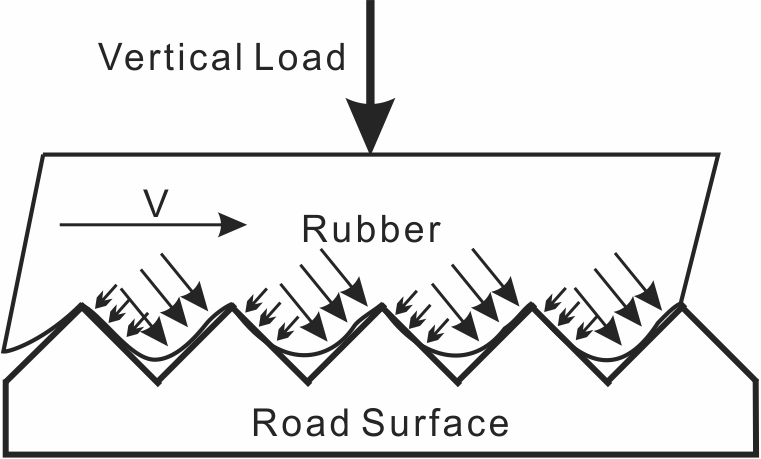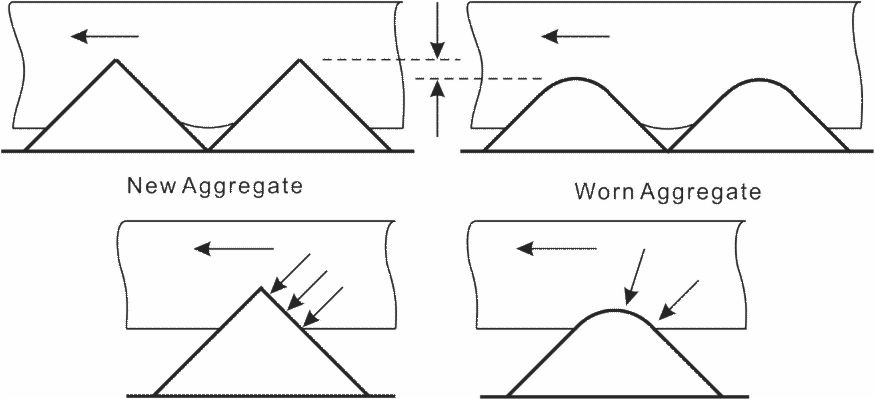INSIDE
RACING
T E C H N O L O G Y
IRT Home
IRT Home
email Paul
Verstappen in the Wet
by Paul Haney
This is another article in the spirit of correcting misconceptions in the nature of the pneumatic tire, arguably the most complex and useful device made on the planet. {The pneumatic tire allows a vehicle to go around a corner with speed and control. Without them we'd all have to live within walking distance of a rail line. That would be a different world.}
What about computers you say. What about jet aircraft or Formula 1 racecars? There are blueprints for those devices. And manufacturing plants full of equipment. Their materials; steel, aluminum, silicon are well characterized. But only a few organizations are capable of the design, manufacture and development of tires. Their manufacturing processes and equipment are complicated and tightly hidden from outside eyes. Rubber changes with time, temperature, and rate of load. Rubber generates friction forces in a complicated array of processes.
Rain dominated the 2016 Brazilian GP Formula 1 race. During a period of particularly hard downpour the stewards deemed the conditions unsafe and sent out the safety car. Most of the drivers followed the safety car on the usual racing line. Max Verstappen, in contrast, spent those laps driving his car off line in the corners and braking areas. He was looking for places where he could feel more grip than on was available on the racing line.
When the race restarted Verstappen passed 12 cars in 15 minutes and earned for himself a podium finish. When asked why he didn't just circulate behind the safety car like everyone else he said, "I was just trying to find grip and alternative lines."
But in this same interview the young Dutchman attributed the lack of grip on the usual line as due to rubber and oil laid down by the racecars. That's what the race announcers usually say when they see a pass made off line in the rain. But that's not correct. There is more grip off line but it's not due to rubber and oil.
Track surface texture is the real reason for a decrease in grip on the racing line and it's the same in the wet as on a dry track: Rubber debris and oil would certainly decrease grip but modern racecars don't spew oil and rubber gets blown off the line quickly by water trying to get out of the way of the tires.
I know drivers who, after hearing about the importance of track texture, walked around tracks scuffing rubber-sole shoes looking for areas in braking zones and corners where a little extra grip might allow them to outbrake and outcorner their competitors. They told me they found places that had more grip and then they were able to pass more cars and even win races. It works. But why?
Rubber generates friction forces in two major ways: adhesion and deformation. Adhesion is generally thought to be the result of momentary molecular bonding between two surfaces. Deformation is akin to mechanical keying of road texture into the tread rubber. Both of these processes are highly viscoelastic and increase with applied load.
Adhesion friction forces depend on intimate contact between
the two surfaces. Any material that gets in the way of that contact
prevents the formation of forces due to adhesion. On a race track
that means any oil, water or dust prevents that intimate contact
leaving deformation friction to generate grip. So how does deformation
friction work?

This graphic shows a rubber block sliding on a textured surface. You can see there is more force on the upstream side of the texture than on the other side. The difference in those two forces is the deformation friction force. More vertical load means deeper penetration of the texture into the rubber and more grip.
But differences in the shape of the texture matters also.

A little known characteristic of rubber is its ability to polish materials as it slides on them. All those laps on the racing line change the track texture on that line from tall, sharp, pointy things to the likes of river pebbles. These graphics show that worn aggregate is not only worn lower but the rounded shape changes the contact angle of the rubber to the aggregate. Both these wear characteristics reduce grip. The first lesson drivers are taught is to follow the racing line so that path gets well polished. Off the racing line the surface is apt to contain many more tall, sharp, pointy things. Thus more grip.
Several years ago I was in a meeting that included an engineer who worked with pavement and pavement materials. After the meeting he drove me to a nearby two-lane road that had been freshly paved with asphalt about six months earlier. He told me to start at one side and scuff my rubber-soled shoes across to the other side. After looking both ways and seeing no approaching vehicles I did as he said. At road's edge there was a lot of grip and it was difficult to advance in that fashion. Then I came to an area where my shoes slid more easily. Then an area of more grip. And again a lane of less grip before getting more grippy toward the middle of the road. On the other side of the road I found the same two lanes of low grip with areas in between them and at the far edge where I had to work hard to scuff along.
It became clear to me that during six months of passing cars their tires had polished two lanes on each side of the road leaving grippier areas everywhere else. Ths was a clear, real-world example of how tires polish a road surface drastically reducing available traction.
In the dry the quickest way around the course is on "the racing line" because it's the shortest path with the largest radii around the turns. But even a dry track has areas where the texture is less worn and a savvy driver can find some extra grip. Rain tires, with softer tread rubber, can exaggerate the benefits of the taller, sharper texture.
Max Verstappen is clearly an exceptional race driver even as he's just turned 20 years old. But I don't understand why he was the only driver at the 2016 Brazilian GP steering his car off line looking for grip not found on the racing line.
How could all those other guys just drive around in line while Max was using that time more productively? Surely they want to win as much as Max. Are they overly confidant in some inherent superiority of mind or body or machinery? Are they ignorant of the variations in grip on a race course?
What about all those engineers and experts working for the teams? Why didn't they instruct their drivers to explore new lines and look for grip? Are all those on-board sensors and digital processors and software just buzzing away looking in other directions? What's more important than grip?
I don't think this is the last surprise we'll see from
the young Mr. Verstappen.